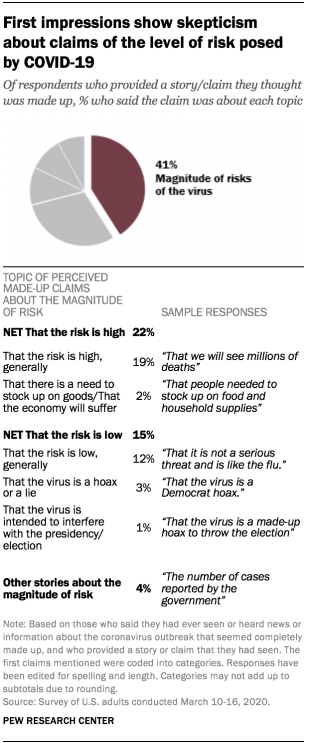A Pew survey of 8,914 US adults found that 4 in 5 Americans believe they were misled by the media about the coronavirus situation. About half of the participants gave examples of this misinformation, and at least a part of it wasn’t actually fake news.

We’ve been covering the COVID-19 pandemic since January, when it was still a “mysterious virus in Wuhan”. Like everyone else, we didn’t know what to make of it at first — and we were shocked to see how quickly and dramatically the situation developed.
We did our best to cover the available information accurately, but we noticed something weird happening in the comment section and the emails we were getting. A lot of people were upset with our coverage and felt like we weren’t communicating the threat properly — about half of the complaints were saying we were exaggerating the risks. The other half claimed we weren’t explaining the risks enough.

A similar feeling seems to be reported in much of the American population. The largest group of responses in the Pew survey (41% of all who provided claims) felt they were misled about the level of risk. The sentiment was divided into two roughly equal sides: 22% felt the information falsely elevated the risk, while 15% felt it downplayed the risk. In particular, people in the latter group cited not only the media but also the administration and the president, who promised an early end to the problem and repeatedly underplayed the risks posed by the coronavirus.
It’s safe to say that President Trump’s intervention has been a major contributor to misinformation, as he repeatedly came out saying that the coronavirus is less dangerous than the flu. But this statement was also found in several media outlets. Just as the administration fumbled its response on multiple levels, so, too, did the media by taking too long in communicating a clear message about the coronavirus situation.
It was only on March 15 when the CDC told the country to stop gathering in groups, and at the time, the virus was already spreading in the US. The government also urged people not to buy any type of face masks, but then changed its recommendation, causing even more confusion.
Americans’ opinions are also mixed about how much misinformation they have seen. According to the Pew survey, 12% believe they’ve seen “a lot”, and 20% believe they’ve seen “none at all”, with the rest stating that they’ve seen “some” or “not much” misinformation.
The survey did not attempt to quantify whether this was indeed misinformation or not.
Concerningly, a part of respondents claimed that reports of coronavirus from other countries, or reports of celebrities being infected, were made up — which is not the case.
This survey goes to show just how much confusion was sown in the American population, and this confusion probably contributed to a delayed response.



